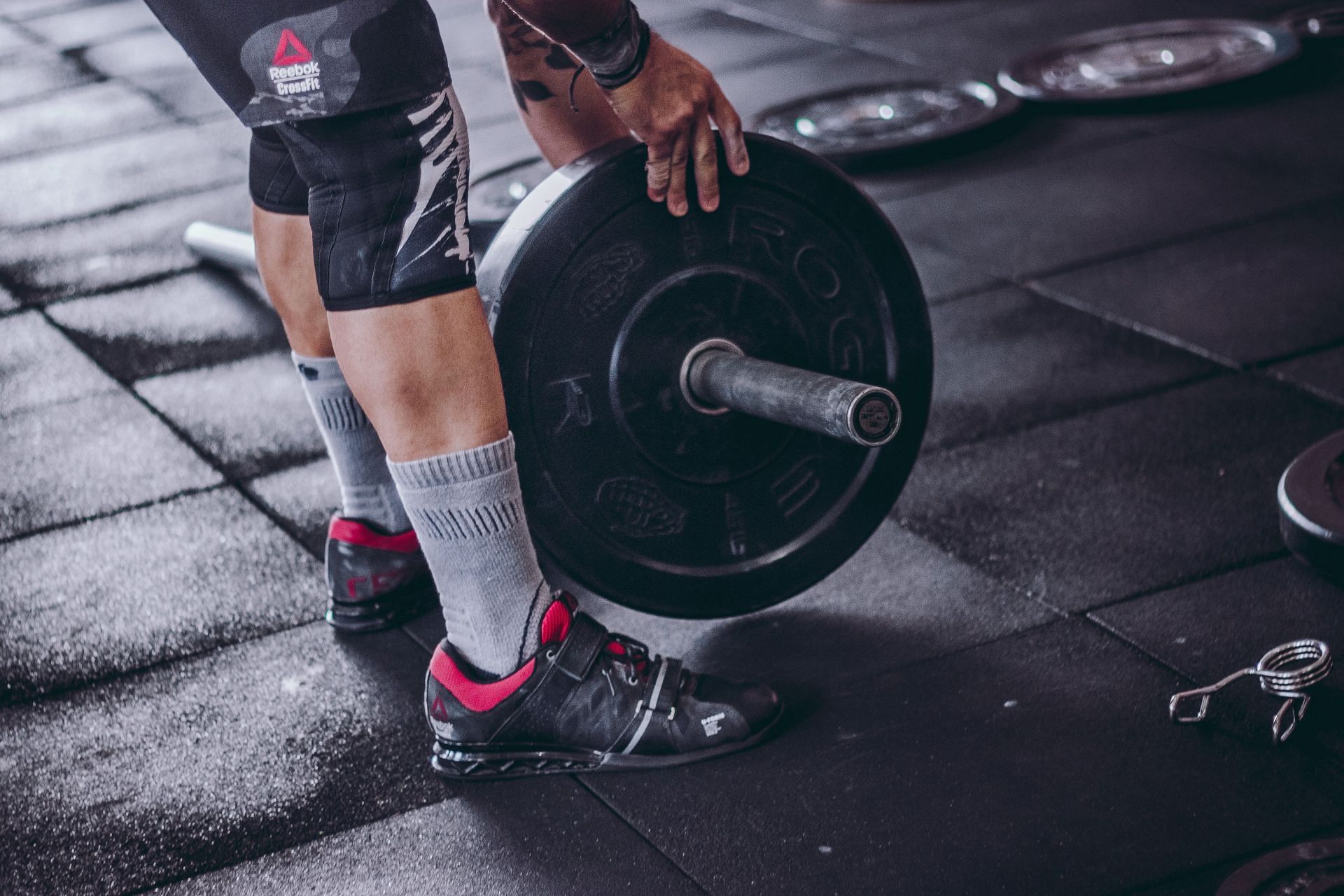Jammers is an intermediate to advanced upper body explosive workout that focuses on the triceps, chest, and core muscles while also building shoulder strength.
Barbell jammers work the biceps and lats to a lesser extent. These are excellent for strengthening quadriceps, glutes, hamstrings, and calves when used in conjunction with squats.
The only equipment required for jammers is the barbell and a landmine bar.
Getting started with Jammers: Correct technique
Here is a step-by-step guide to ace the jammers exercise:
- Place one end of a regular barbell in a corner to keep it from moving about, and a weight on the other end of the barbell with a collar to keep it from falling off throughout the exercise.
- Stand with your feet slightly wider than shoulder width, toes pointed forward or slightly outward, and the barbell between both feet and directly beneath your center of gravity.
- Squat by shifting your hips back and forth, creating a hinge-like movement at your knees. Your knees will progressively slide forward as you lower your hips.
- Excessive forward movement of the shinbones over the toes should be avoided. Keep your trunk and spine straight by bracing your core. Lower yourself till your thighs are parallel to or near it.
- Continue lowering yourself until your thighs are close or parallel to the floor, or until your heels lift off the floor, or until your body rounds or flexes forward.
- Lift the barbell end and grasp it firmly in both hands with a closed grip (thumbs wrapped around the bar). Place the end of the bar in front of your chest, directly beneath your chin.
- Maintain a neutral (normal-to-flat) spine, shoulders sunk (no shrugging), and scapulae retracted body position (squeezing shoulder blades together).
- Keep your chest up and out, your head in line with your spine or slightly stretched (raised), your heels on the floor, and shoulders slightly over or in front of the bar.
- To begin the upward part of the movement, push your feet to the ground and press your hips forward to lengthen your legs.
- Stand up while continuing to grip the end of the barbell in front of your chest.
- As you near full standing, immediately push through your heels, extending and pushing the hips towards an upright position, continue to press the end of the barbell upwards with both hands still gripping the end of the bar, stiffening your core and abdominal muscles ("bracing") to stabilize your spine.
- Eventually push upwards onto your toes at the ankle while pushing the bar overhead into full extension until the hips and knees have reached full extension.
- During the overhead push, don't arch your back. Move your legs to a triple extension by rolling them up on your toes.
Benefits of doing the jammers
If you are having second thoughts about doing the jammers, check out this list of benefits offered:
- Deltoids, pectorals, triceps, lats, and core muscles are targeted during the jammer exercise. Since exercise necessitates maintaining a neutral spine, you'll need to work your core muscles, which include deep abdominal muscles, often known as the transverse abdominis.
- When done as a press solely, the barbell jammer is considered a strength exercise, especially for the shoulder muscles. You can press with one arm or both at the same time to complete the maneuver.
- With single-arm jammers, you can isolate each side separately, which can help with muscular imbalances. Your core muscles must also work extra hard to help with balance and stability.
- You can strengthen your quads, glutes, hamstrings, and calves by adding a squat to the jammer exercise. This helps to stabilize the hips, which reduces lower back pain, improves posture, and increases performance in fitness and sports.
Tips to remember to avoid mistakes
To get the most out of this exercise as well as to avoid injuries, remember the below given tips:
1) Too much weight
The shoulders are a very small muscle group. Keep the weight light when executing this move as a pressing exercise, especially at first. If your lower body is involved, you can increase the resistance, but until you perfect the technique, start with the bar (and no weight).
2) Arching lower back
The jammer exercise requires you to stand upright and press the weight over your head; maintaining a neutral spine and a strong lower back is critical to avoid injury in this area.
People often use this technique with a curve or arch in their lower back, indicating that the core muscles are not being engaged. Tighten your core before hitting the bar to rectify this.
3) Make sure to engage your core
When you have your weight in front of you, you may fall forward, putting strain on your lower back. Tighten your core muscles before pressing the bar to fix this. Your core muscles serve as an internal weight belt, helping to maintain your form tight and your entire body powerful. You can keep your lower back strong by engaging your core muscles, which prevents it from dipping and putting strain on the erector spinae muscles.
